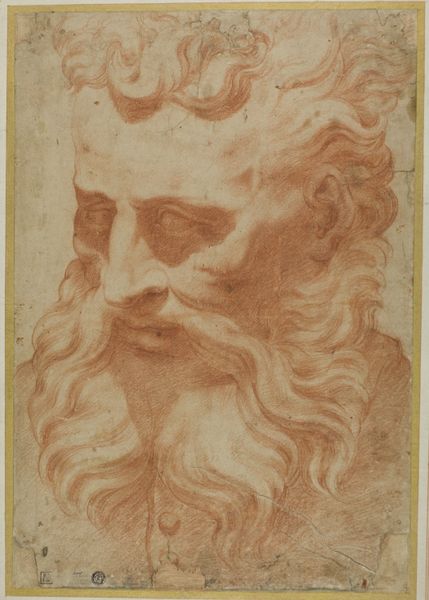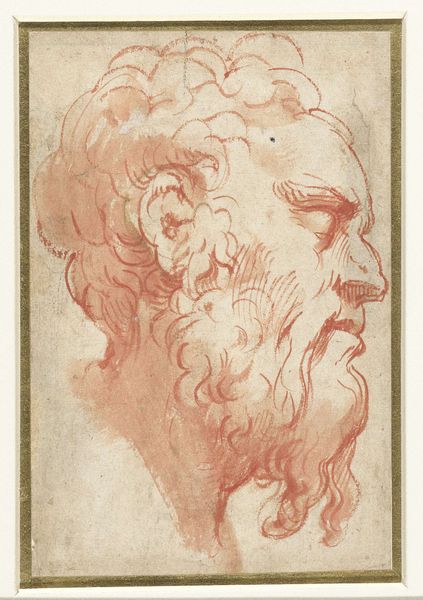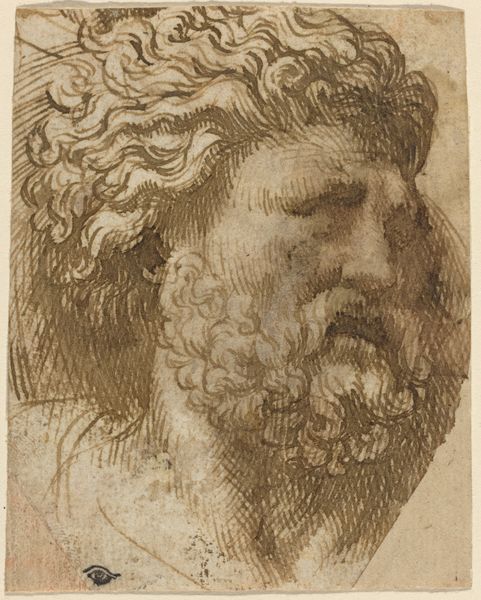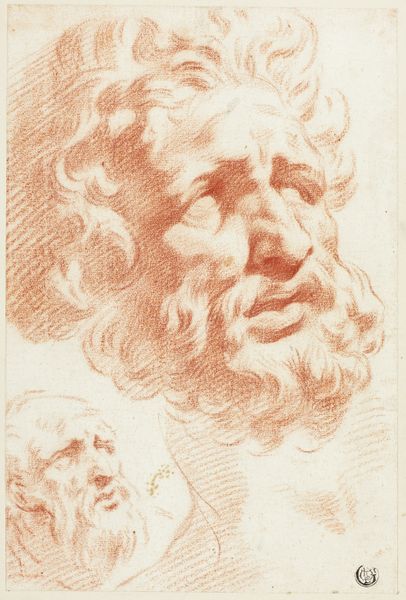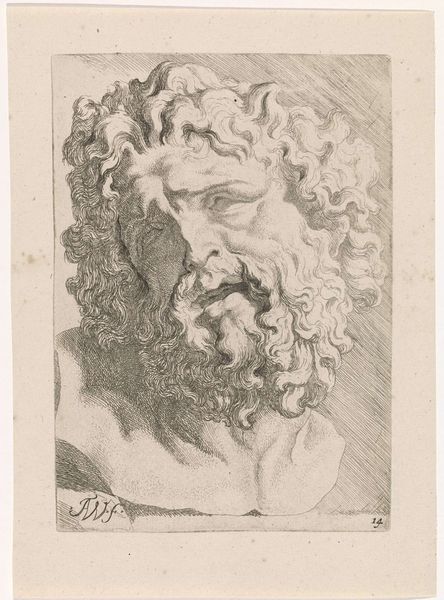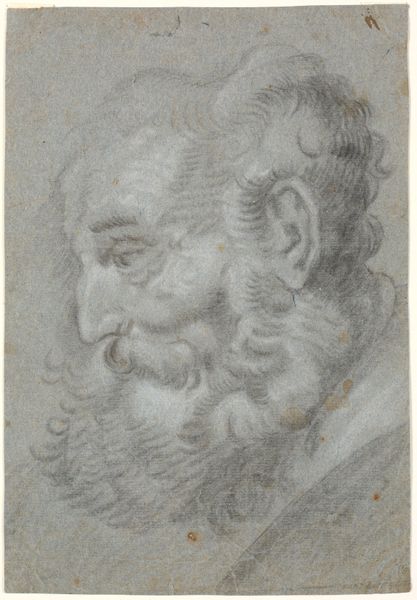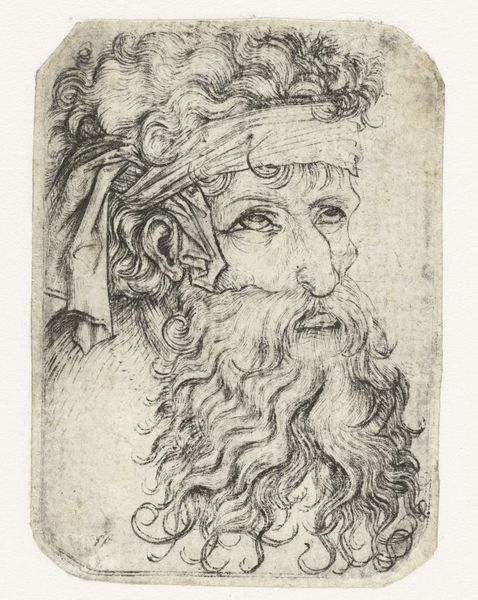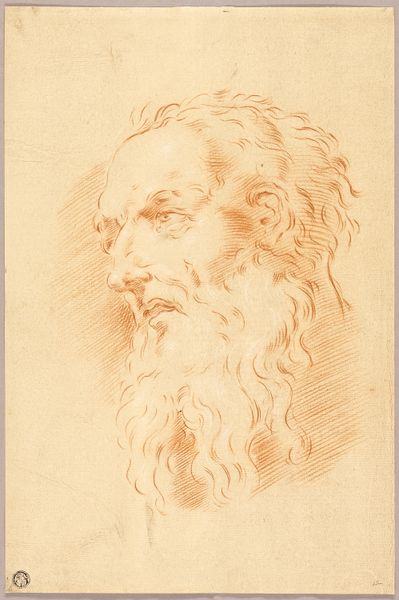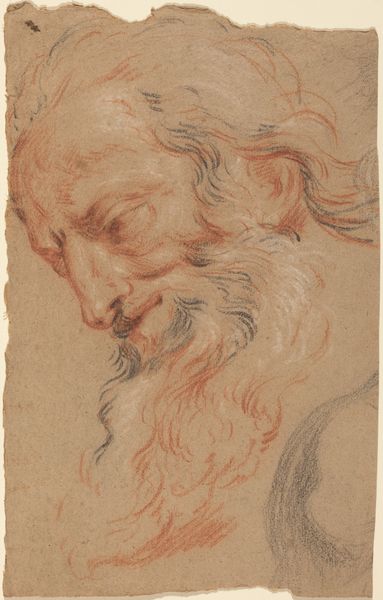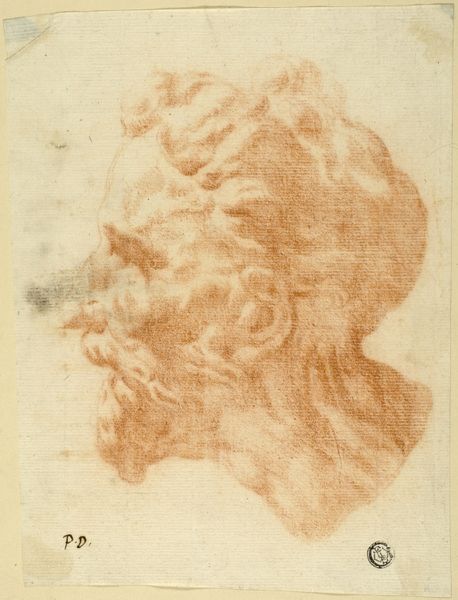
drawing, paper, dry-media, chalk
#
portrait
#
drawing
#
classical-realism
#
charcoal drawing
#
figuration
#
paper
#
dry-media
#
pencil drawing
#
chalk
#
line
#
history-painting
#
academic-art
#
italian-renaissance
Dimensions: 270 × 163 mm
Copyright: Public Domain
Curator: This red chalk drawing at the Art Institute of Chicago is titled "Head of Laocoon," and it is attributed to Pietro Dandini, though its precise date remains unknown. Editor: The first thing that strikes me is the sheer weight of the implied emotion—torment, almost? You can feel it radiating outwards from the figure’s downturned mouth and deeply furrowed brow. Curator: Absolutely. Dandini masterfully employs the red chalk to delineate the muscularity of the neck and face, playing with light and shadow to heighten the dramatic intensity. The cross-hatching technique adds textural complexity to the curls of his hair and beard. Editor: And one can’t ignore the source material. Laocoon, the Trojan priest who warned against bringing the wooden horse into Troy, was punished by the gods. His suffering resonates, especially considering art history's complex relationship with power, and who gets to be remembered as "heroic". It raises questions about resistance, dissent, and the price of speaking truth to power. Curator: Interesting, I am looking more into the technical details like line quality and modeling, but I also feel that. Dandini certainly evokes the drama inherent in the original sculpture, emphasizing Laocoon's inner turmoil. This drawing almost transcends its function as a study. Editor: I agree. By focusing on this single, isolated head, Dandini amplifies the emotional and psychological impact. I think of all those marginalized voices through history. How often do their struggles mirror that of Laocoon? The piece definitely calls upon contemporary discussions on privilege, oppression, and silenced narratives. Curator: Regardless of one's interpretation, Dandini's mastery of the medium and his insightful rendering of emotion render "Head of Laocoon" a truly remarkable work. Editor: I'm leaving here considering those hidden narratives and remembering the necessity to confront structures of authority. Art serves as a mirror, reflecting our times back at us while urging introspection and social consciousness.
Comments
No comments
Be the first to comment and join the conversation on the ultimate creative platform.
